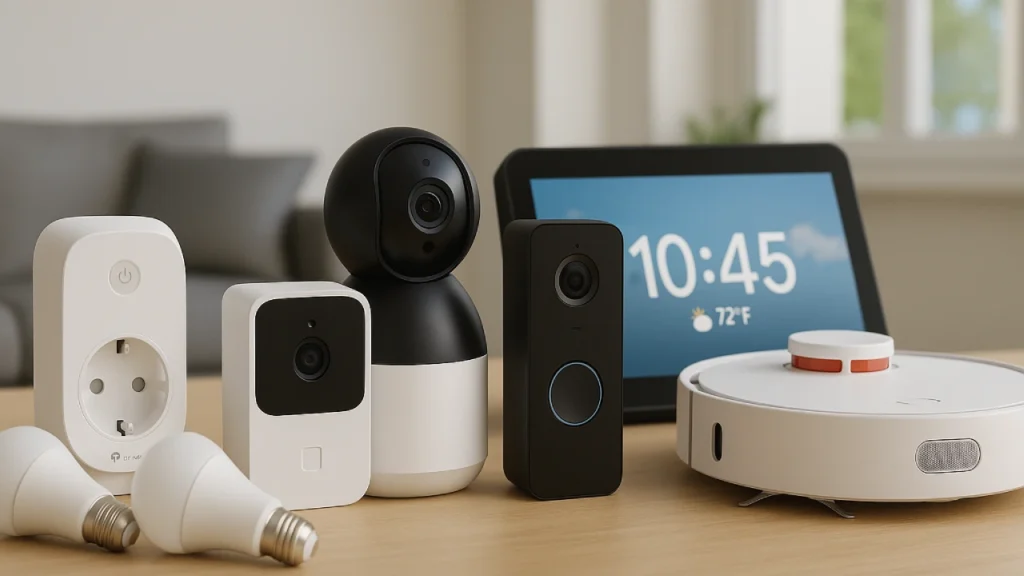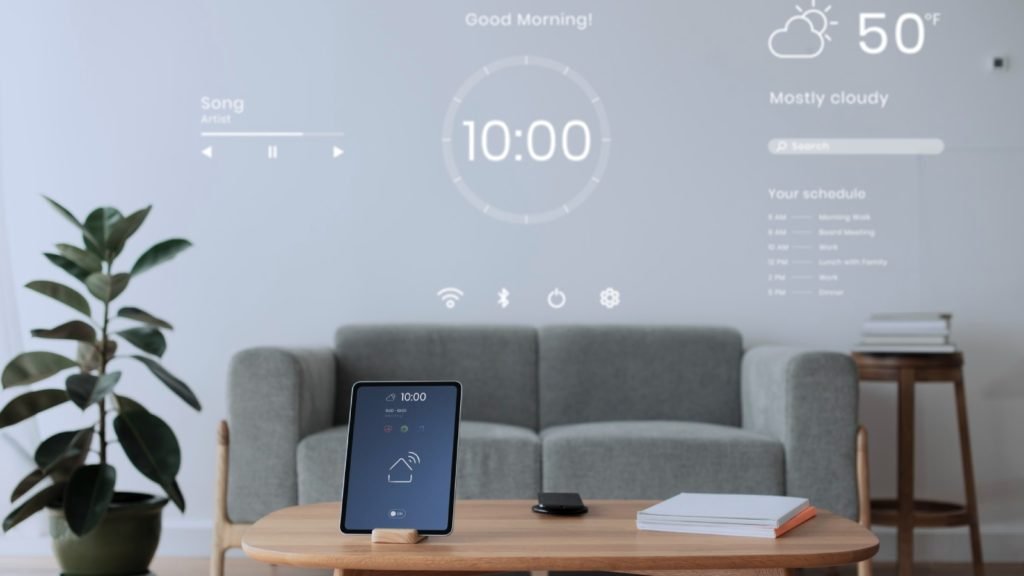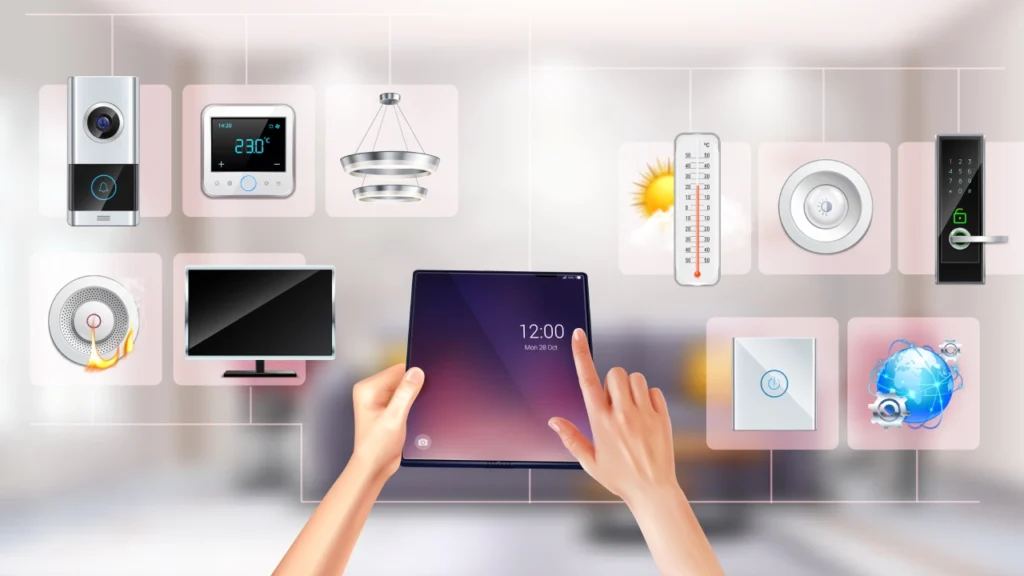Table of Contents
Highlights
- Touchless devices like automatic dispensers, faucets, trash cans, toilets, and smart lighting reduce germ spread, save cleaning time, and add everyday convenience.
- Families can start with high-contact areas like sinks and trash cans, choosing models based on sensor type, power needs, and smart-home compatibility.
- Even small upgrades bring noticeable hygiene and comfort benefits without requiring a full renovation.
Maintaining top-touch surfaces germ-free has become a low-key trend that has transitioned into a lasting behavior for most homes. Touchless devices—automatic dispensers, motion-sensing faucets, sensor trash cans, and intelligent toilets—aid in reducing the frequency of hands, food, or pets touching common surfaces. Aside from obvious hygiene gains, the devices save cleaning time, ease wear on fixtures, and often ease morning routines a little. The technology has improved and is more affordable, so it’s now easy for most households to implement a few carefully selected touch-free improvements.
Why touchless tech matters
Each touch of a faucet handle, soap dispenser, or light switch provides germs, oils, and crumbs the chance to travel from hand to surface and vice versa. In homes with young children, seniors, or anyone with compromised health, elimination of those contact points is a practical way to reduce transmission of everyday microbes.

There are convenience benefits too: hands remain cleaner when preparing food, bathroom visits can be faster and neater, and little nuisances—such as opening a garbage can with sticky hands—are gone. The marriage of better sensors, more streamlined industrial design, and reduced prices has positioned touchless alternatives within reach of more homes, so these advantages no longer need a grand overhaul or an expensive outlay.
Top touchless gadgets to consider
Automatic soap and sanitizer dispensers are often the easiest first upgrade. These countertop units use simple infrared or proximity sensors to deliver a measured dose of soap or sanitizer without any contact. In busy kitchens and bathrooms, touchless dispensers reduce the chance of re-contaminating hands while lathering or drying, and they’re especially helpful for encouraging regular handwashing among children.
When comparing models, it’s worth thinking about sensor sensitivity, the option to adjust dose sizes, frequency of refills, and splash-resistance appropriate for the sink space. Rechargeable models eliminate the constant battery changes that some lower-cost models necessitate.
Motion-sensing faucets and kitchen prep faucets provide the same touchless convenience directly to flowing water. They generally employ sensors placed under the spout or at the base to sense hand movement and open the flow without turning a handle.

That’s a definite plus when hands are greasy, wet, or working with raw ingredients. Worthy features to look for are the location and accuracy of the sensor, whether the unit is battery-powered or hardwired, and whether there are simple manual overrides or comfort and safety temperature presets. Most mainstream plumbing companies now have models that reconcile reliable sensing with established faucet looks.
Trash cans with motion lids are surprisingly effective hygiene improvements. Since garbage duty is necessarily dirty, an automatic top that opens and closes upon approach prevents hands from coming into contact with potentially germy surfaces and deters pets from foraging. Contemporary sensor cans feature quiet motors, adjustable sensing ranges, and considerate features such as liners that are simple to replace. For families that prefer discretion and low upkeep, these models represent a considerable improvement in cleanliness and odor control.
Bathroom fixtures have also entered the age of touchless. Intelligent toilets and bidet seats with automatic flushing, opening and closing lids, and wash-and-dry functions eliminate the need to touch bathroom surfaces entirely.
More expensive models tend to feature heated seats, self-cleaning nozzles, and cleaning cycles that sanitize the wand or bowl between uses. For anyone who wants to avoid contact in the room where cleanliness is most important, these appliances can be life-changing.

Lighting and switches complete the list of functional touchless features. Motion sensors, proximity-sensitive switches, and voice-controlled systems keep hand contact with hall, bathroom, and utility area wall switches to a minimum. More advanced smart lighting platforms are increasingly integrating ambient sensing so lights respond to the presence without the need for a standalone wall-mounted sensor, minimizing installation effort and clutter
How families can select and install touchless devices
It is most convenient to plan a touchless upgrade by beginning with the areas of greatest contact generation: usually the bathroom sink, kitchen sink and trash can. Upgrading these three areas first provides an instant hygiene gain and momentum for additional upgrades in the years ahead. When making device choices, aligning sensor type with the usage purpose has a substantial impact. Infrared sensors are good for accurate applications such as dispensing soap and activating water at close proximity, whereas passive infrared (PIR) or microwave sensors are used to sense movement in a room or approaching a garbage can.
Practical requirements like power and mounting are also significant. Battery-powered models are easy and handy to install, but require homeowners to verify the estimated battery life and whether the device has a low-battery warning.
Hardwired models, like certain faucets and switches, offer a one-time-only solution that eliminates the need for mid-week battery replacements but usually must be installed professionally. Sensor performance is impacted by environmental conditions, so it is best to prevent direct sunlight, sources of hot air, or shiny surfaces close to the sensor to minimize false alarms.

In the case of homes with pre-existing smart platforms, compatibility and connectivity make good selection criteria. Products that have Matter, Zigbee, Z-Wave support, or connections to major ecosystems can be included in routines—so one motion event might, for instance, turn on lights, activate exhaust fans, or make an entry.
In addition to “no touch,” some of these features bring additional hygiene value: antimicrobial coatings, encased housings that repel grime, and easy-to-clean surfaces increase the utility of any touchless product. In bathrooms, automatic sanitizing or cleaning cycles in contemporary toilets and bidets provide an extra protection that completes the touchless experience.
Small wins and practical advice
It doesn’t take a complete renovation to adopt touchless tech. A small investment—a sensor soap pump, a motion trash can, and an entrance motion light—tends to produce noticeable benefits nearly right away. Families tend to favor units with retention of manual override features, as haptic control may prove beneficial in certain cases or be liked by individual members. A brief demonstration for family members and frequent guests avoids frustration: knowing the correct distance or angle of a sensor avoids futile attempts and saves resources.
It is also a good idea to watch for sensor common mistakes. Animals, flapping drapes, and sudden breezes can cause spurious triggering, so tweaking sensitivity or moving a unit might cure nuisance trips. For those who desire the convenience at the expense of nothing, searching for models having good reviews on sensor accuracy and durability is a reasonable strategy.

Touchless home devices have graduated from novelty to useful household devices. By restricting surface contact at critical touch points—hands, faucets, trash, and toilets—these products assist in minimizing cross-contamination and ease everyday cleaning.
Beginning with some strategic upgrades in the bathroom and kitchen reduces disruption while offering immediate gains in convenience and cleanliness. With improved sensors, wiser designs, and wider support for smart-home systems, touchless technologies are now an affordable option for families to make every day cleaner and less high-maintenance.